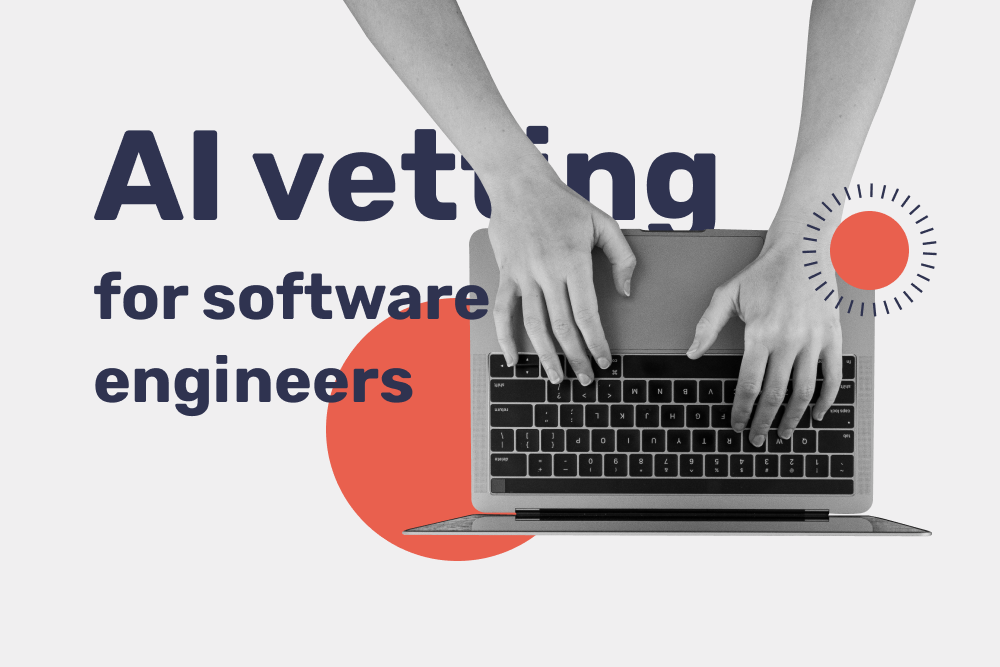The demand for tech talent continuously shifts, influenced by a variety of factors like the ever-changing technology, economic tides, and, of course, unexpected twists like the pandemic. Just think of it ‒ not long ago, the COVID-19 pandemic accelerated the digital transformation across industries, intensifying the need for skilled technical professionals. And now? Tech giants like Amazon and Twitter announced massive layoffs in the fear of a coming economic downturn.
Dynamic changes in the tech hiring landscape can’t but affect businesses, making them doubt their hiring approaches and strategies. Companies are worried that their recruitment methods are not enough to fill the required positions. For example, 91% of leaders are “concerned” about hitting speed-to-hire goals for the year, while a mid and small-sized company spends on average up to $30,000 to fill a tech role.
Yet, the biggest problem isn’t necessarily a tech talent shortage. The real deal here is that companies are rather slow when it comes to adapting their hiring practices to the changing hiring market. According to the State of Tech Talent Acquisition 2023, where they surveyed 1,000 talent global leaders, the traditional tech talent acquisition methods are almost dead and there is a strong need for new mindsets and strategies to get the best tech experts. So, businesses, both big and small, require a new approach to acquire tech specialists and build high-performing software development teams.
Being more than a decade on the market, we at Bridge are constantly adjusting our hiring strategies to find the right tech experts with minimum time and resources for our partners. In this article, we will share some insights on how to update and improve your hiring approach.
5 tips to modernize your hiring strategy
Here are our recommendations on how you can rethink your recruitment strategy in light of changes in the tech landscape.
Hire candidates with “non-traditional” background
When hiring a dentist, the first thing you will check is their medical degree. That makes sense, right? However, such an approach shouldn’t necessarily work in other industries, including technology. What’s more, a linear career path, when a person climbs the career ladder step by step, is outdated these days. Today, a career path is a curve with ups and downs, twists and turns, where an employee might change their role to a more junior one only because that’s their passion.
Instead of focusing on degrees or skill gaps, broaden the scope of candidate evaluation and focus on so-called “non-traditional” talent (individuals who do not have the professional education traditionally associated with the technology industry). It’s not about where they’ve been, it’s about whether they can cope with specific tasks here and now. By opening doors to “non-traditional” specialists, you will expand the talent pool with flexible, future-ready people, motivated enough to handle any challenges, and, therefore, improve your bottom line.
Incorporate advanced technologies
Today, no one argues that technologies help optimize the hiring process, streamline operations, and enhance candidate assessment. So, it would be unwise to ignore modern tech tools in your hiring campaigns. For example, a world-known ChatGPT might become a powerful tool for tech talent hiring.
Let’s start with what is on everyone’s lips ‒ artificial intelligence (AI) and machine learning (ML). You can find a great number of AI vetting tools to improve talent assessment and acquisition, like Codility, CodeSignal, and more. Such platforms automate repetitive tasks, and speed up screening, while providing data-driven insights and freeing recruiters from manual time-consuming operations. In case you need AI developers to implement any of your ideas, learn how to evaluate their skills in our related article:
Another tool that deserves our attention is an Applicant Tracking System (ATS), which enables recruiters to effectively manage campaigns in one place. Such platforms are usually integrated with various platforms, like job boards and social media platforms, and technologies, like AI and ML. Besides, recruitment software solutions offer a great variety of tools for video interviewing, online proctoring, test generation, and more.
Prioritize diversity, equity, and inclusion (DEI)
More and more organizations are launching DEI initiatives within their workforce understanding its significance for the company’s prosperity. Based on the LinkedIn study, 60% of respondents claimed that diversity within their sales team has contributed to their teams’ success. Therefore, you should make DEI a top priority and develop strategies to attract a diverse range of candidates.
Hiring for Diversity: Why Tech Teams Need To Be More Diverse
DEI is about something different from statistics in an annual report, though. You should rethink your hiring strategy from start to finish to attract diverse talent and maintain an inclusive work culture. Advertise job roles on different platforms, use inclusive language in job descriptions, highlight diversity in branding and during the interview, and use blind recruitment techniques, such as removing names or photos when screening resumes. These are a handful of tips that might help you get started. We’ve got more insights in our latest article:
At Bridge, we help companies build diverse teams by sourcing developers from various countries and continents, including North America, Latin America, and Europe.
Create a positive work environment
It’s the third millennium outside and employees are not ready to sacrifice their mental health or time with the nearest and dearest for career as it was in the recent past. Quick fact: 53% of employees are more likely to prioritize health and well-being over work compared to the pre-pandemic times. That’s why, creating and promoting a positive work environment should be a core component of your hiring strategy.
Start with building a positive employer brand and showcasing positive testimonials from current employees on your website. Emphasize benefit packages, like health insurance, retirement plans, and flexible schedules. Create a healthy workplace where employees get wide opportunities for professional development and are evaluated based on their current achievements, not on their previous experience or education. A positive workplace not only attracts top talent but also contributes to employee satisfaction, engagement, and retention.
Try sourcing-as-a-service
One more solution that can improve your hiring strategy is sourcing-as-a-service. It’s a great option when you need qualified pre-screened candidates for potential hires. Here is how it works with Bridge.
Our sourcing team becomes an extension of your in-house team. Using an automated sourcing engine, we narrow the talent pool and reach out to candidates who fit the project requirements. Bridge’s sourcers communicate with applicants in their native language and perform additional screening when necessary. You can fine-tune the selection criteria, tailor and approve our outreach messages. As a result, we provide companies with a monthly selection of 15 to 30 pre-vetted candidates tailored to specific needs, enabling them to kickstart the interview process.
Acquire A-tier tech talent with Bridge
Apart from sourcing, we can help you add extra talent with specialized skill sets to the in-house team for short or long-term engagement. That’s a part of our IT staffing services. In this case, you create a job requisition on our web platform and we start searching for candidates. Next, we select the most appropriate applicants for you to interview and approve the best fit. Finally, we hire and help onboard approved candidates. We also cover payroll administration, employee benefits, and tax documentation, while you pay only the developer’s salary for the work done,
Whether you need to fill the skill gap with additional experts or just get a list of potential hires for the future, Bridge can fulfill the task fast and efficiently.
Contact our team to discuss your project requirements!



